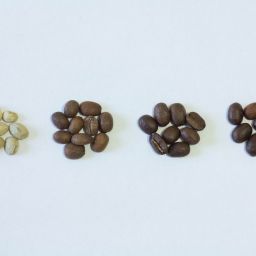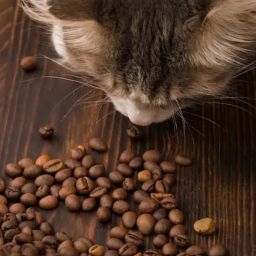
The Moka Pot, with its distinctive octagonal shape, is more than just a coffee maker; it’s a symbol of Italian coffee culture and a testament to timeless design. Invented in 1933 by Luigi De Ponti for Alfonso Bialetti, the Moka Pot has since become a staple in households worldwide, beloved for its ability to produce a concentrated, espresso-like coffee without the need for expensive and bulky machines.
However, the secret to unlocking the full potential of this iconic brewer lies not just in mastering its use but in the careful selection of coffee beans. The right beans can transform a simple morning ritual into an exquisite sensory journey, elevating the humble cup of coffee into an art form. This blog post aims to guide you through the intricacies of choosing the best coffee beans for your Moka Pot, ensuring that each cup you brew is as flavorful and satisfying as possible.
Understanding the Moka Pot
To appreciate why certain coffee beans work better in a Moka Pot, it’s essential to understand how the device works. Unlike traditional drip coffee makers, the Moka Pot employs a unique brewing method that extracts coffee under pressure.
Water heated in the lower chamber creates steam, building pressure that forces the water upwards through a basket containing the ground coffee, then into the upper chamber where the brewed coffee collects. This process, akin to a simplified version of espresso brewing, produces a coffee that’s rich, bold, and full-bodied.
The Moka Pot’s brewing dynamics—specifically, its use of pressure and heat—mean that not all coffee beans are created equal when it comes to this method of coffee making. Factors such as the roast level, bean origin, and freshness can significantly influence the taste and quality of the final brew.
For instance, a dark roast may emphasize bold, chocolatey flavors, while a lighter roast might bring out more acidity and floral notes, showcasing the bean’s inherent characteristics. Similarly, the freshness of the beans affects the coffee’s aroma and flavor intensity, with freshly roasted beans offering a more vibrant and nuanced cup.
In the following sections, we’ll delve deeper into the types of coffee beans, exploring how their characteristics influence their suitability for Moka Pot brewing and providing recommendations to help you find your perfect match.
Types of Coffee Beans
In the quest for the perfect cup of Moka Pot coffee, understanding the types of coffee beans is crucial. Primarily, there are two species of coffee beans that dominate the market: Arabica and Robusta. Each offers distinct flavors, aromas, and caffeine levels, which can significantly affect your brewing outcome.
Arabica Beans
Arabica beans are the most popular worldwide, known for their smooth, complex flavor profiles. They typically exhibit a wider range of tastes, from sweet and fruity to tangy and floral, making them a favorite among coffee aficionados. Arabica plants are more sensitive to the environment, requiring specific climatic conditions to thrive, which contributes to their varied flavor profiles based on their origin.
For Moka Pot brewing, Arabica beans are prized for their nuanced flavors that can shine through the strong, concentrated brew the pot produces. However, their lower caffeine content compared to Robusta means that the resulting coffee may be less bitter and lighter in body, appealing to those who prefer a more refined cup.
Robusta Beans
On the other hand, Robusta beans are known for their strong, robust flavor and higher caffeine content. They often have a more bitter and earthy taste, which can be an acquired preference for some. Robusta plants are hardier and can be grown in a wider range of environments, which makes them less expensive and more accessible. In a Moka Pot, Robusta beans can produce a powerful, bold coffee with a rich crema, making it ideal for those who prefer their coffee with a pronounced intensity and body. The higher caffeine content not only gives a stronger kick but also contributes to a fuller mouthfeel and a longer-lasting aftertaste.
Blends
In addition to single-origin beans, blends of Arabica and Robusta are common, aiming to combine the best of both worlds. A blend can offer the nuanced flavor of Arabica beans with the body and crema of Robusta, making for a balanced and complex cup. For Moka Pot users, experimenting with different blends can be a rewarding journey, as the pot’s brewing method is particularly well-suited to highlighting the complexity of blended coffees.
Best Coffee Beans for Moka Pot
When choosing the best coffee beans for your Moka Pot, there are several factors to consider, including roast type, origin, and freshness. The goal is to select beans that will complement the brewing method, allowing you to enjoy the full spectrum of flavors coffee has to offer.
Criteria for Selecting Beans
- Roast Type: Medium to dark roasts are generally preferred for Moka Pot brewing, as they withstand the heat and pressure well, producing a rich, full-bodied coffee. Light roasts can be used but may result in a more acidic cup.
- Origin: Single-origin beans can provide unique flavor profiles that are interesting to explore with a Moka Pot. However, blends are also a good choice, offering a balanced and consistent flavor.
- Freshness: Freshly roasted beans are essential for any brewing method, but especially so for a Moka Pot. The freshness impacts the coffee’s aroma and flavor, with stale beans resulting in a flat and lifeless cup.
Top Recommendations
- Brazilian Santos: Known for its smooth, nutty flavor, Brazilian Santos is an excellent choice for Moka Pot brewing. Its medium body and low acidity make it a versatile bean that appeals to a wide range of palates.
- Ethiopian Yirgacheffe: For those who prefer a more aromatic and fruity cup, Ethiopian Yirgacheffe beans are ideal. Their light floral and citrus notes can beautifully complement the Moka Pot’s concentrated brew.
- Sumatra Mandheling: If you’re a fan of full-bodied coffee, Sumatra Mandheling beans offer deep, earthy flavors with hints of chocolate and spice, perfect for a rich Moka Pot coffee.
Grinding Coffee for Moka Pot
The grind size plays a critical role in the success of your Moka Pot coffee. A grind that’s too fine can lead to over-extraction and bitterness, while a grind that’s too coarse may result in a weak, under-extracted cup. The ideal grind size for a Moka Pot is a fine to medium-fine, slightly coarser than what you would use for an espresso machine but finer than for a drip coffee maker.
Best Practices for Grinding
- Consistency is Key: Use a burr grinder to achieve a uniform grind size. This ensures even extraction and a balanced flavor.
- Adjust According to Taste: If your coffee tastes too bitter, try a slightly coarser grind. If it’s too weak or sour, a finer grind may be necessary.
- Experiment: Don’t be afraid to experiment with different grind sizes to find what works best for your taste preferences and specific Moka Pot.
Brewing Tips for the Perfect Cup
Brewing with a Moka Pot is an art that requires attention to detail. Here are some tips to help you brew the perfect cup:
- Preheat Water: Start with preheated water in the bottom chamber to reduce the time your coffee is exposed to heat, preventing a burnt taste.
- Don’t Overpack the Basket: Fill the coffee basket evenly but don’t tamp the grounds, as this can restrict the water flow and lead to over-extraction.
- Use Low to Medium Heat: Keep the heat low to medium to avoid burning the coffee. The brewing process should take about 5 minutes.
- Listen for the Gurgling Sound: Once you hear the characteristic gurgling sound, remove the Moka Pot from the heat. This indicates that the brewing is complete.
Conclusion
Mastering the Moka Pot and finding the best coffee beans for it is a rewarding journey for any coffee lover. By understanding the nuances of coffee bean types and how they interact with the brewing process, you can elevate your coffee experience to new heights. Remember, the key to great Moka Pot coffee lies in experimentation and personal preference. Don’t hesitate to try different beans, grinds, and brewing techniques until you find your perfect cup.









